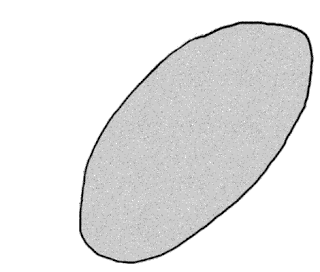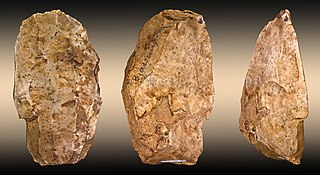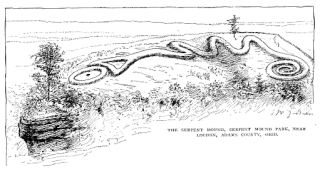
In archaeology, in particular of the Stone Age, lithic reduction is the process of fashioning stones or rocks from their natural state into tools or weapons by removing some parts. It has been intensely studied and many archaeological industries are identified almost entirely by the lithic analysis of the precise style of their tools and the chaîne opératoire of the reduction techniques they used.

In archaeology, a lithic core is a distinctive artifact that results from the practice of lithic reduction. In this sense, a core is the scarred nucleus resulting from the detachment of one or more flakes from a lump of source material or tool stone, usually by using a hard hammer precursor such as a hammerstone. The core is marked with the positive scars of these flakes. The surface area of the core which received the blows necessary for detaching the flakes is referred to as the striking platform. The core may be discarded or shaped further into a core tool, such as can be seen in some types of handaxe.
A stone tool is, in the most general sense, any tool made either partially or entirely out of stone. Although stone tool-dependent societies and cultures still exist today, most stone tools are associated with prehistoric cultures that have become extinct. Archaeologists often study such prehistoric societies, and refer to the study of stone tools as lithic analysis. Ethnoarchaeology has been a valuable research field in order to further the understanding and cultural implications of stone tool use and manufacture.
In archaeology, lithic analysis is the analysis of stone tools and other chipped stone artifacts using basic scientific techniques. At its most basic level, lithic analyses involve an analysis of the artifact’s morphology, the measurement of various physical attributes, and examining other visible features.

A hand axe is a prehistoric stone tool with two faces that is the longest-used tool in human history, yet there is no academic consensus on what they were used for. It is made from stone, usually flint or chert that has been "reduced" and shaped from a larger piece by knapping, or hitting against another stone. They are characteristic of the lower Acheulean and middle Palaeolithic (Mousterian) periods, roughly 1.6 million years ago to about 100,000 years ago, and used by Homo erectus and other early humans, but rarely by Homo sapiens.

The Oldowan was a widespread stone tool archaeological industry (style) in prehistory. These early tools were simple, usually made with one or a few flakes chipped off with another stone. Oldowan tools were used during the Lower Paleolithic period, 2.6 million years ago up until at least 1.7 million years ago, by ancient Hominins across much of Africa. This technological industry was followed by the more sophisticated Acheulean industry.
The Calico Early Man Site is an archaeological site in an ancient Pleistocene lake located near Barstow in San Bernardino County in the central Mojave Desert of Southern California. This site is on and in late middle-Pleistocene fanglomerates known variously as the Calico Hills, the Yermo Hills, or the Yermo formation. Holocene evidence includes petroglyphs and trail segments that are probably related to outcrops of local high-quality siliceous rock.

In the sequence of cultural stages first proposed for the archaeology of the Americas by Gordon Willey and Philip Phillips in 1958, the Lithic stage was the earliest period of human occupation in the Americas, as post-glacial hunter gatherers spread through the Americas. The stage derived its name from the first appearance of Lithic flaked stone tools. The term Paleo-Indian is an alternative, generally indicating much the same period.

The Luiseño or Payómkawichum are an indigenous people of California who, at the time of the first contacts with the Spanish in the 16th century, inhabited the coastal area of southern California, ranging 50 miles (80 km) from the present-day southern part of Los Angeles County to the northern part of San Diego County, and inland 30 miles (48 km). In the Luiseño language, the people call themselves Payómkawichum, meaning "People of the West." After the establishment of Mission San Luis Rey de Francia, "the Payómkawichum began to be called San Luiseños, and later, just Luiseños by Spanish missionaries due to their proximity to this San Luis Rey mission.
The San Dieguito complex is an archaeological pattern left by early Holocene inhabitants of Southern California and surrounding portions of the Southwestern United States and northwestern Mexico. Radiocarbon dating places a 10,200 BP (8200 BCE) date consideration.
The archaeological La Jolla complex represents a prehistoric culture oriented toward coastal resources that prevailed during the middle Holocene period between c. 8000 BC and AD 500 in southwestern California and northwestern Baja California.
The San Luis Rey Complex is an archaeological pattern representing the latest phase of prehistory in the region occupied at the time of European contact by the Luiseño Indians. Studies by Clement W. Meighan and Delbert L. True in northern San Diego County, California, defined the complex, which is also represented in adjacent portions of Riverside and Orange counties.
The Cuyamaca complex is a precolumbian complex, dating from the late Holocene, with archaeological sites in San Diego County, California. This complex is related to the Kumeyaay peoples.
D. L. True was an archaeologist who worked in California, particularly San Diego County, and in northern Chile.
The Soanian culture is a prehistoric technological culture from the Siwalik Hills in the Indian subcontinent. It is named after the Soan Valley in Pakistan. Soanian sites are found along the Siwalik region in present-day India, Nepal and Pakistan. The Soanian culture has been approximated to have taken place during the Middle Pleistocene period or the mid-Holocene epoch (Northgrippian). Debates still goes on today regarding the exact period occupied by the culture due to artefacts often being found in non-datable surface context. This culture was first discovered and named by the anthropology and archaeology team led by Helmut De Terra and Thomas Thomson Paterson. Soanian artifacts were manufactured on quartzite pebbles, cobbles, and occasionally on boulders, all derived from various fluvial sources on the Siwalik landscape. Soanian assemblages generally comprise varieties of choppers, discoids, scrapers, cores, and numerous flake type tools, all occurring in varying typo-technological frequencies at different sites.
The Jurgens Site is a Paleo-Indian site located near Greeley in Weld County, Colorado. While the site was used primarily to hunt and butcher bison antiquus, there is evidence that the Paleo-Indians also gathered plants and seeds for food about 7,000 to 7,500 BC.
The Apishapa culture, or Apishapa Phase, a prehistoric culture from 1000 to 1400, was named based upon an archaeological site in the Lower Apishapa canyon in Colorado. The Apishapa River, a tributary of the Arkansas River, formed the Apishapa canyon. In 1976, there were 68 Apishapa sites on the Chaquaqua Plateau in southeastern Colorado.
The Vail Pass Camp is a multi-component prehistoric site, situated at the summit of Vail Pass, just below the timberline in Colorado. The camp was occupied for over 7000 years, inhabited by various North American aboriginal groups, and is the first open lithic-scatter site. Thirty-three radiocarbon dates were obtained, ranging from 7320 B.P. to 190 B.P. with most dating to the last 3,000 years. The Vail Pass Camp was most likely discovered in 1887 by T.D.A Cockerell.
Hidden Falls is an archaeological site that contains evidence for the earliest occupation in Southern Alaska along with evidence of marine resource usage. It is dated to the Archaic and Pacific period, between 9,500 and 1800 B.C.
The Cerutti Mastodon site is a paleontological and possible archeological site located in San Diego County, California. In 2017, researchers announced that broken mastodon bones at the site had been dated to around 130,700 years ago.






